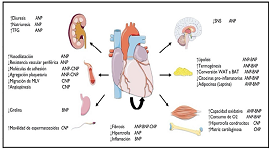
Asia Pacific Academy of Science Pte. Ltd. (APACSCI) specializes in international journal publishing. APACSCI adopts the open access publishing model and provides an important communication bridge for academic groups whose interest fields include engineering, technology, medicine, computer, mathematics, agriculture and forestry, and environment.

Research on inversion method of left ventricular myocardial tissue parameters based on BP neural network
Vol 2, Issue 1, 2021
Download PDF
Abstract
Because it contains pathological characteristics such as changes in myocardial tissue characteristics, the deformation and dynamic characteristics of human left ventricle have become an important basis for clinical diagnosis of heart disease. Based on BP neural network method, this study carries out the identification of left ventricular myocardial tissue parameters through the inversion of left ventricular clinical diagnosis data. Firstly, the image recognition program is written in MATLAB language to extract the location points of inner and outer membranes in human left ventricular CT image, establish the real geometric model of left ventricle in solidworks software, and establish the finite element analysis model of left ventricle through ABAQUS software. Secondly, Mooney Rivlin hyperelastic model is used to simulate the characteristics of myocardial tissue, ABAQUS finite element software is used to conduct dynamic numerical analysis on the left ventricular finite element model, and 45 groups of input target vectors of BP neural network corresponding to three characteristic moments are obtained. Finally, the BP neural network program is written in MATLAB language to train the input target vector, and establish the nonlinear mapping relationship between left ventricular diagnostic data and myocardial tissue parameters. The analysis results of examples show that BP neural network can be well used for myocardial tissue parameter inversion based on clinical data, and is expected to become an effective method for clinical diagnosis of left ventricular lesions caused by changes in myocardial tissue characteristics.
Keywords
References
- Gao H, Li WG, Cai L, et al. Parameter estimation in a Holzapfel Ogden law for healthy myocardium. Journal of Engineering Mathematics. 2015; 95(1): 231–248.
- Davies V, Noè U, Lazarus A, et al. Fast parameter inference in a biomechanical model of the left ventricle by using statistical emulation. Journal of the Royal Statistical Society: Series C (Applied Statistics). 2019; 68(5): 1555–1576.
- Chabiniok R, Wang VY, Hadjicharalambous M, et al. Multiphysics and multiscale modelling, data model fusion and integration of organ physiology in the clinic: Ventricular cardiac mechanics. Interface Focus. 2016; 6(2): 2015–2033.
- Gao H, Aderhold A, Mangion K, et al. Changes and classification in myocardial contractile function in the left ventricle following acute myocardial infarction. Journal of the Royal Society, Interface. 2017; 14(132): 2017–2023.
- Hadjicharalambous M, Asner L, Chabiniok R, et al. Non invasive model based assessment of passive left ventricular myocardial stiffness in healthy subjects and in patients with non ischemic dilated cardiomyopathy. Annals of Biomedical Engineering. 2017; 45(3): 605–618.
- Nasopoulou A, Shetty A, Lee J, et al. Improved identifiability of myocardial material parameters by an energy based cost function. Biomechanics and Modeling in Mechanobiology. 2017; 16(3): 971–988.
- Fan LL, Yao J, Yang C, et al. Material stiffness parameters as potential predictors of presence of left ventricle myocardial infarction: 3D echo based computational modeling study. Journal of Medical Biomechanics. 2015; 30: 82–83.
- Sommer G, Haspinger D C, Andrä M, et al. Quantification of shear deformations and corresponding stresses in the biaxially tested human myocardium. Annals of Biomedical Engineering. 2015; 43(10): 2334–2348.
- Guan DB, Ahmad F, Theobald P, et al. On the AIC based model reduction for the general Holzapfel Ogden myocardial constitutive law. Biomechanics and Modeling in Mechanobiology. 2019; 18(4): 1213–1232.
- Sommer G, Schriefl AJ, Andrä M, et al. Biomechanical properties and microstructure of human ventricular myocardium. Acta Biomaterialia. 2015; 24: 172–192.
- Mi B, Hong W, Song J, et al. Research on the pre-diagnosis method of myocardial ischemia based on infrared thermal imaging technology and BP neural network. Advances in Lasers and Optoelectronics. 2019; 56(1): 160–166.
- Gao Y, Zhang W, Li D, et al. Inversion analysis of ceramic damage parameters based on back-propagation neural network. Journal of Ordnance Engineering. 2018; 39(1): 146–152.
- Xu Y. Heart mechanics simulation based on finite element method [PhD thesis]. Harbin Institute of Technology; 2015.
- Wu G, Liu F, Xia L, et al. Establishment of finite element mechanical model of human left ventricular composite material. Chinese Journal of Biomedical Engineering. 2002; 21(5): 404–410.
- Nikou A, Dorsey SM, McGarvey JR, et al. Computational modeling of healthy myocardium in diastole. Annals of Biomedical Engineering. 2016; 44(4): 980–992.
- Wang QJ, Lu P. Research on application of artificial intelligence in computer network technology. International Journal of Pattern Recognition and Artificial Intelligence. 2019; 33(5): 195–215.
- He Y, Meng ZY, Xu H, et al. A dynamic model of evaluating differential automatic method for solving plane problems based on BP neural network algorithm. Physica A: Statistical Mechanics and Its Applications. 2020; 556: 124–145.
- Li G, Hu Y, Li QB, et al. Inversion method of in situ stress and rock damage characteristics in dam site using neural network and numerical simulation—A case study. IEEE Access. 2020; 8: 46701–46712.
- Tian L, Fan Q, Cao Y, et al. Simulation of heart mathematical model based on hyperelastic materials. Rubber Industry. 2019; 66(8): 577–580.
- Fu C. Cone beam CT-guided pelvic tumors in different fixed positions on a six-dimensional bed and the placement error of the target area. Medical Equipment. 2020; 33(19): 12–20.
Supporting Agencies
Copyright (c) 2021 Qishuai Zhang, Kehu Yang, Luxian Li

This work is licensed under a Creative Commons Attribution 4.0 International License.

This site is licensed under a Creative Commons Attribution 4.0 International License (CC BY 4.0).

Prof. Prakash Deedwania
University of California,
San Francisco, United States




